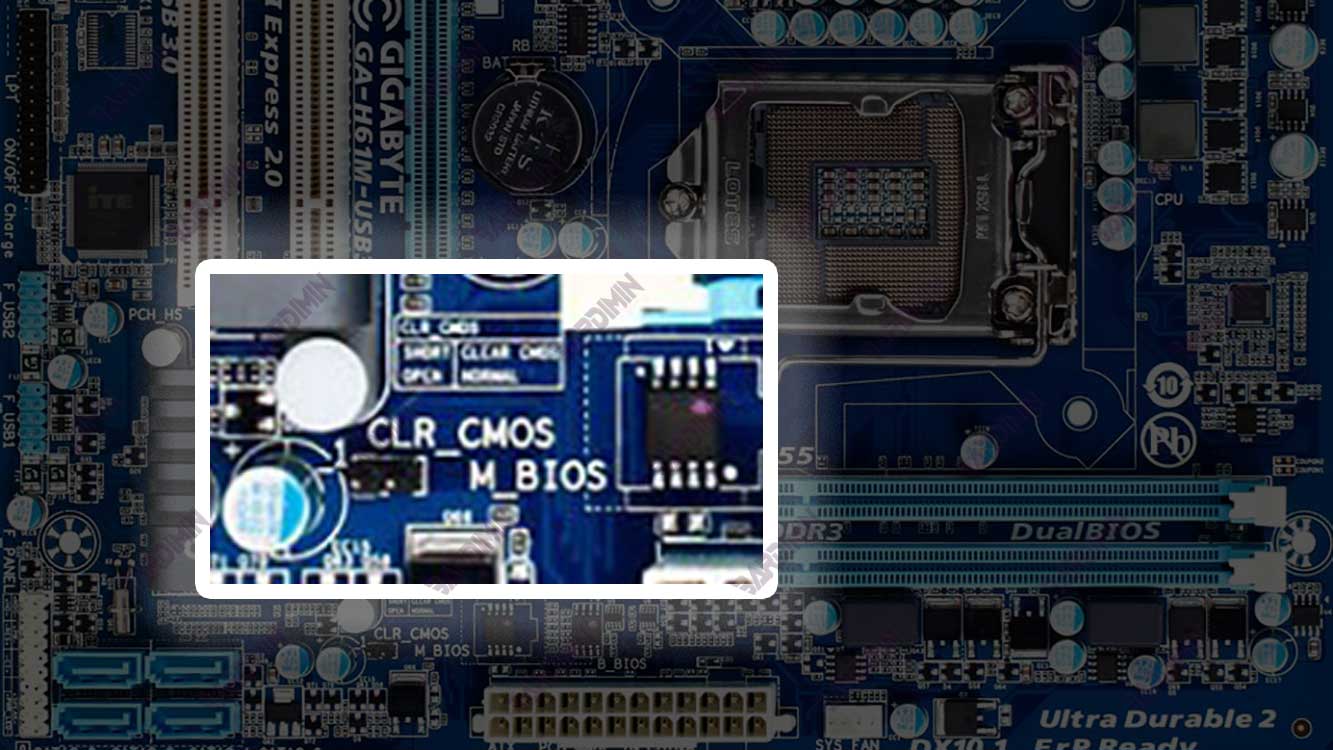CMOS (Complementary Metal-Oxide Semiconductor) is a small chip that stores information about BIOS settings (Basic Input/Output System) on the motherboard. BIOS is a program that manages communication between hardware and the operating system on a computer. CMOS uses a small battery to store that information even when the computer is turned off.
Sometimes, you may need to reset CMOS to restore BIOS settings to default or resolve issues caused by incorrect BIOS settings. For example, if you change frequency, voltage, or time settings on your CPU, RAM, or graphics card, and your computer doesn’t boot properly, you might need to reset CMOS to clear those settings.
There are several ways to reset CMOS on the motherboard, depending on the model and brand of your motherboard. In this article, I will describe three common methods you can use to reset CMOS on the motherboard, namely:
- Using the CMOS jumper
- Discharging the CMOS battery
- Using the CMOS button

Before you begin, make sure you turn off your computer and disconnect the power cord from the power source. Also, you may need to open your computer case to access the motherboard. In addition, you should be careful not to touch other components on the motherboard or cause static damage. You can use an anti-static bracelet or touch an unpainted metal surface to remove static charges from your body.
Using CMOS Jumpers
A CMOS jumper is a small connector consisting of two pins that you can connect to a metal clip. CMOS jumpers are usually near the CMOS battery or RAM slot on the motherboard. You can recognize a CMOS jumper by looking at the labels written around it, such as CLR_CMOS, CLEAR CMOS, CMOS_RST, or the like.
To reset CMOS by using the CMOS jumper, follow these steps:
- Look for the CMOS jumper on your motherboard. You can refer to your motherboard’s manual for the location and label of the CMOS jumper.
- Remove the metal clip from the CMOS jumper. Typically, a metal clip will attach to two adjacent pins, referred to as normal pins. You need to remove the metal clip from the normal pin and move it to another pin, which is referred to as the reset pin.
- Wait a few seconds, then return the metal clip to the normal pin. This will erase the information stored in the CMOS and return the BIOS settings to default.
- Close your computer case and turn it back on. You might see a message saying that BIOS settings have been reset or being prompted to enter BIOS settings. You can follow the on-screen instructions to continue.
Discharging the CMOS Battery
A CMOS battery is a small round battery attached to the motherboard. CMOS batteries are usually about 2 cm in size and silver. The CMOS battery serves to provide power for CMOS to store information about BIOS settings.
To reset CMOS by removing the CMOS battery, follow these steps:
- Look for the CMOS battery on your motherboard. You can refer to your motherboard’s manual to find out the location and type of CMOS battery.
- Remove the CMOS battery from its socket. You may need to use a tool such as a screwdriver or tweezers to remove the CMOS battery. Be careful not to damage the socket or CMOS battery.
- Wait a few minutes, then put the CMOS battery back in its socket. Make sure you install the CMOS battery correctly, corresponding to its positive and negative poles. This will erase the information stored in the CMOS and return the BIOS settings to default.
- Close your computer case and turn it back on. You might see a message saying that BIOS settings have been reset or being prompted to enter BIOS settings. You can follow the onscreen instructions to continue.
